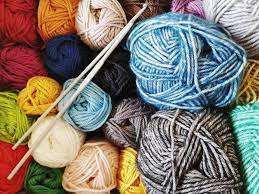An immensely useful invention.
By Michiel Heyns van Staden, Data Strategy, Solutions and Analytics Lead, Absa Group

Michiel Heyns van Staden
Being able to visualise often complex information in a succinct way, with the added bonus of allowing end users to interactively engage with what they find, can be so powerful in empowering better informed decision making.
Like when you end up wrapping everything in sight with woolen outfits, building dashboards can however also become addictive.
Do not build a dashboard for nobody
Before you even think about starting to build a new dashboard, ask yourself who is going to use it, for what. In fact, a very specific end user need should be the trigger.
Your first port of call is to spend time with this person.
Do not think you know better than them what they need. Ultimately the criteria of success is whether they end up happily and consistently using the report.
Your expertise as a business intelligence developer and visualization guru is invaluable, but only so far as it enables you to put something together that works for them.
Often they will have an objective in mind, but not know up front exactly what they need. This is where a close collaborative partnership is critical.
Creating something that remains useful and relevant on an ongoing basis is never a once off endeavor.
Because you can, isn’t a good reason
The possibilities are endless and constantly expanding.
Your criteria for selecting a visualization should be whether it would intuitively give the end user the information they need.
Just because you can figure out a way to leverage the latest shiny or most complex graph, certainly isn’t a good enough reason to use it, if that stands in the way of delivering the required information successfully.
Also avoid pie charts as much as possible:)
Don’t get sucked into the data wormhole
The more time you spend with the data, the more you are going to discover. Much of what you find might very well seem very interesting. Especially if you are a data person.
Not everybody enjoys data without reason.
It is tempting to include all you’ve found into the dashboard, whilst you’re at it, and just in case somebody somewhere someday might maybe find some kind of use for it.
Don’t.
Go back to the real world. Go back to talking to people. Go back to the practical use case and make sure you deliver a product to suit.
Anything that distracts from this end goal, is an own goal.
Dashboards are a means, not an end
Often having less is better than having more.
Ultimately we want everybody to be able to get to the views they are looking for as easily as possible. If a dashboard is not adding value, it is probably only going to end up getting in the way.
I’ve heard raving reviews of amazing dashboards that have every possible segmentation slice and all of the available information in spectacular views, quickly turning into a white elephant as soon as the novelty has worn off. Especially if it takes time to load.
For creations that stand the test of time:
- Talk to people,
- Start with what you are solving for &
- End up solving for it
Unless we’re actively learning more about what doesn’t work, and applying those learnings to refine what we produce, each failed dashboard is a step backwards for dashboarding in the eyes of the beholder.
The unused ones also make it harder for those well developed and useful builds to thrive amongst the weeds.
Knitting is a wonderful pastime, but unfortunately, for many of us, we need to buy our knitting time with jerseys and socks that work.


